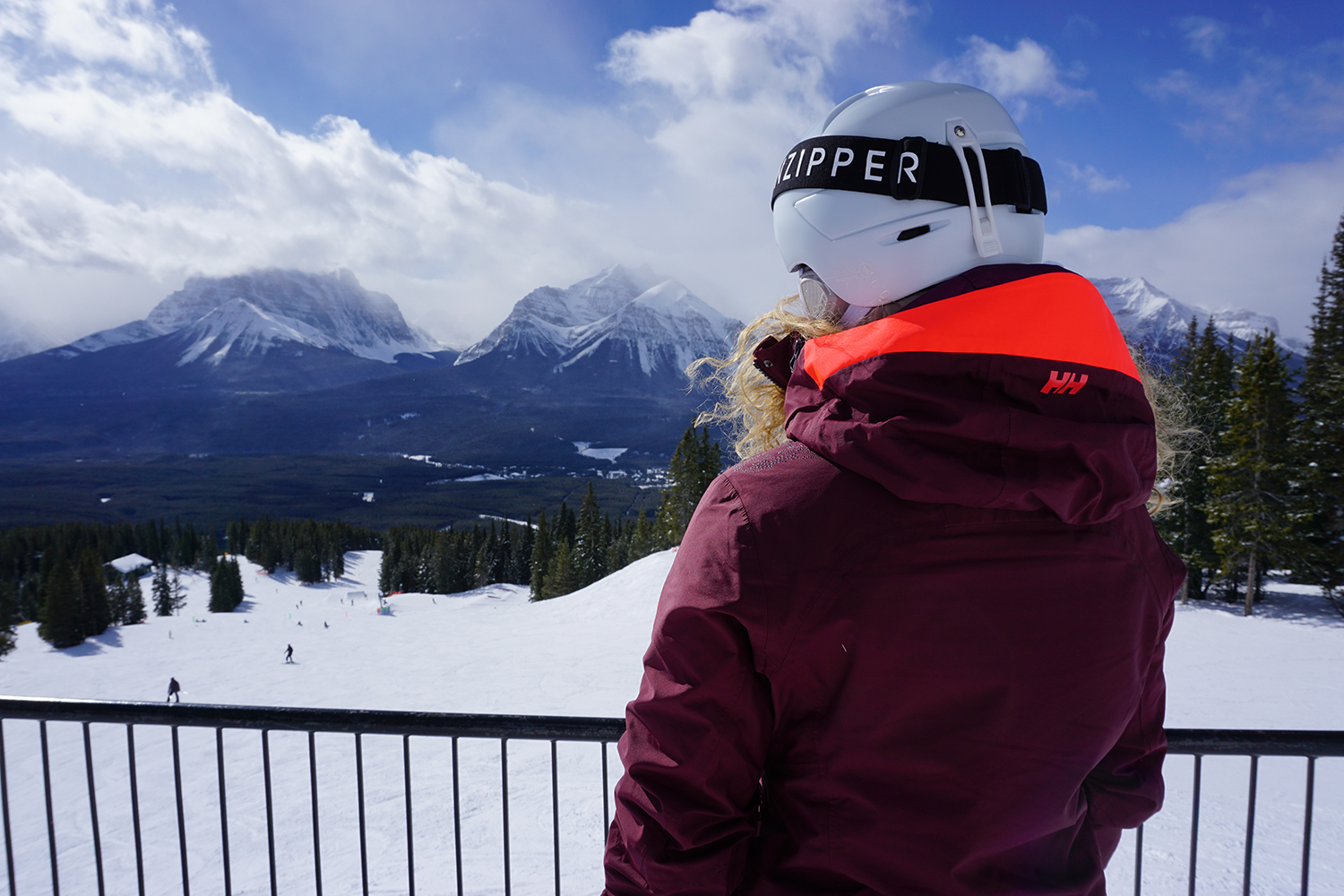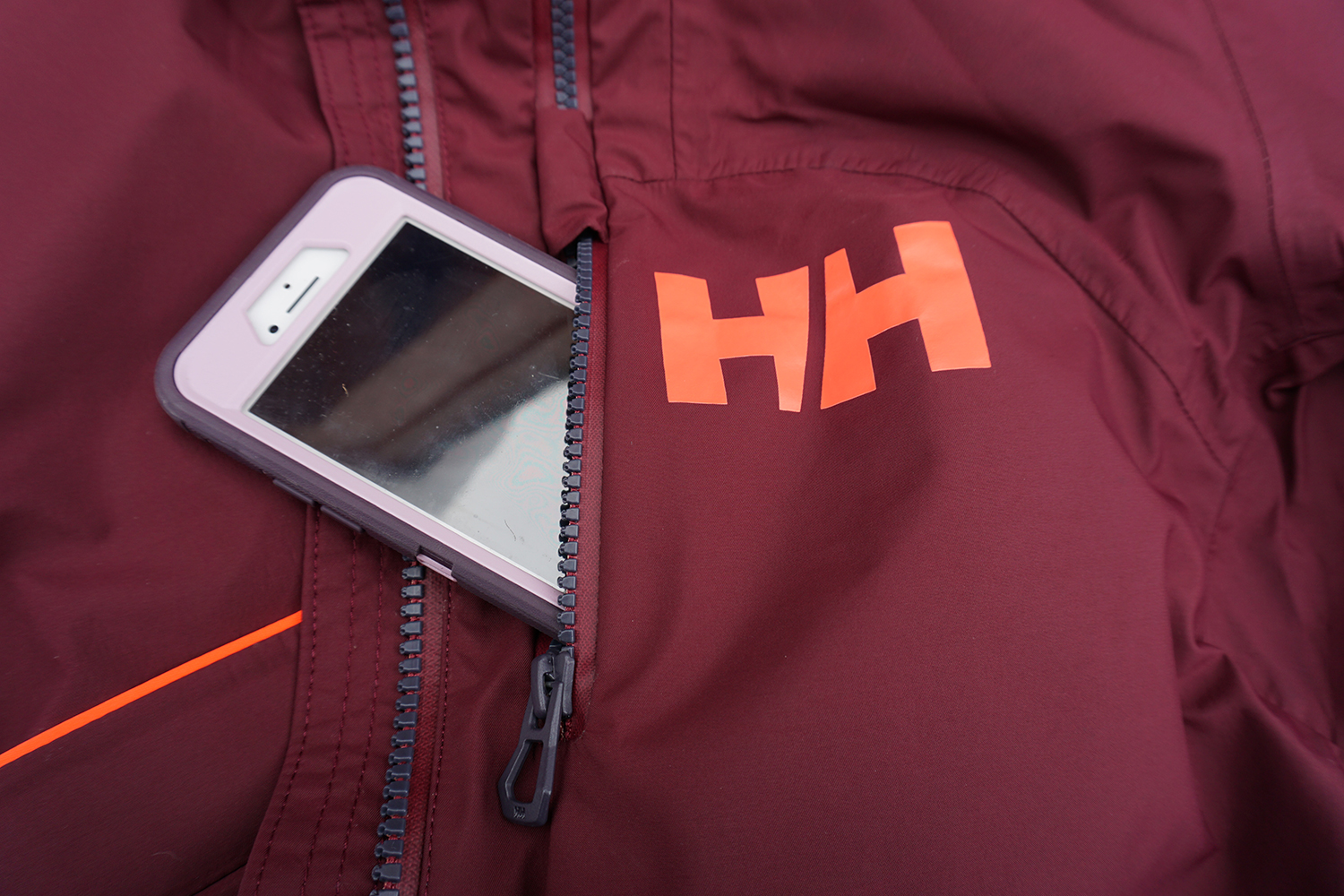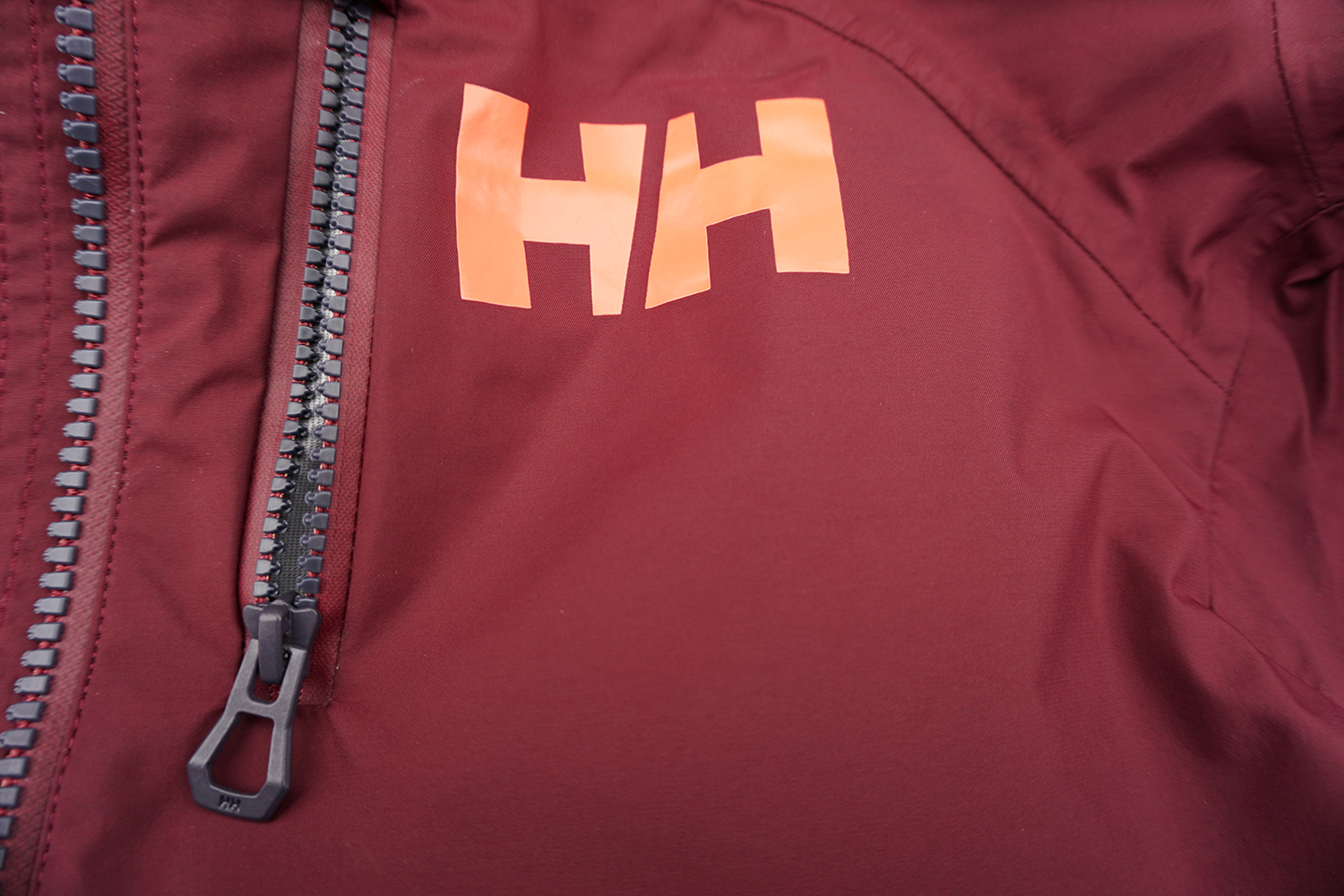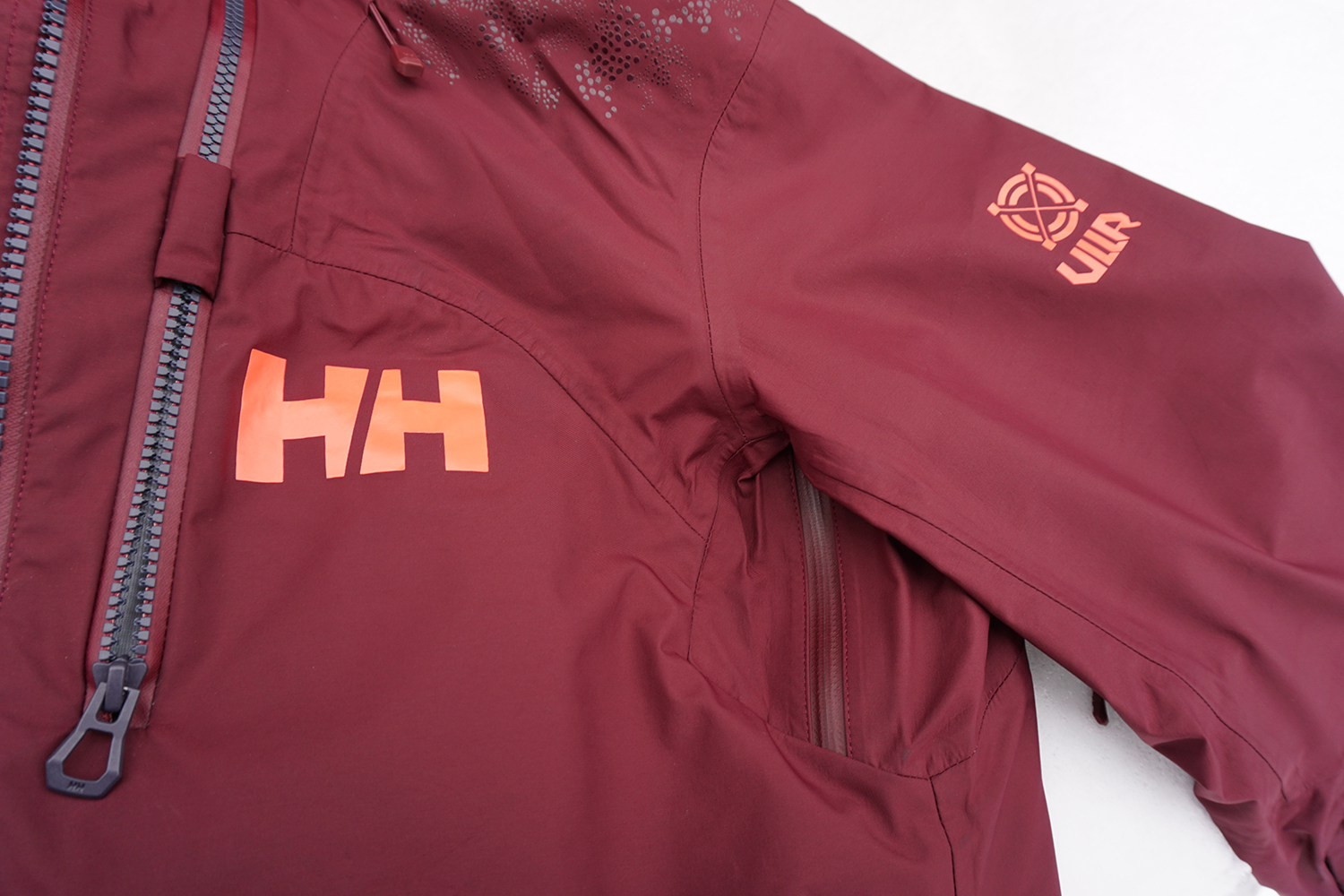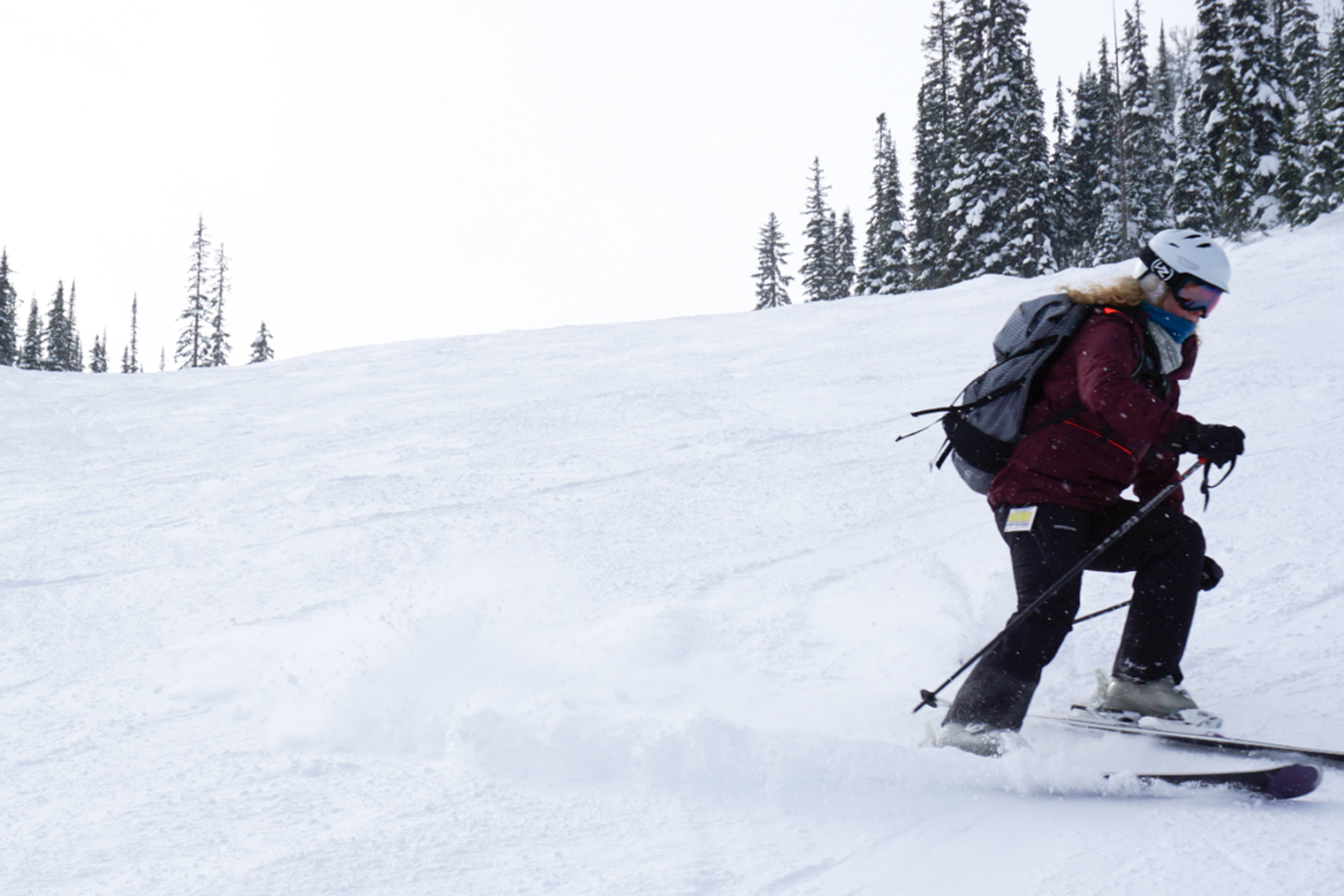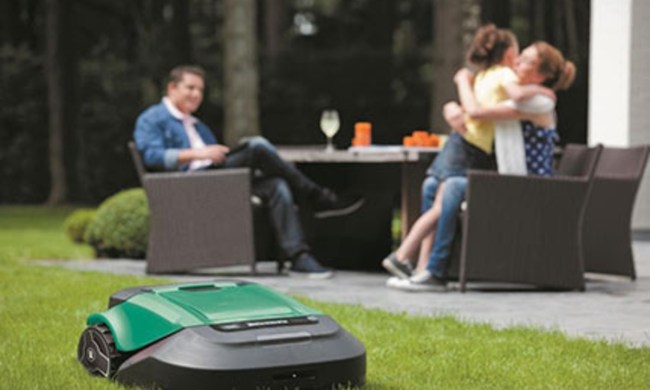If you’ve yet to hear much about the wonder insulator aerogel, that’s likely to change dramatically over the next 12 months — and it deserves every bit of the hype. Though it’s still relatively unknown, it has been utilized by NASA to help insulate rovers and electronics, giving it one hell of an initial stamp of approval. Now, the fabric designer PrimaLoft brought aerogel to the outdoor industry in the past year, teaming with companies like Helly Hansen and L.L. Bean who helped pave the way forward.
One such application of the substance is used in what Helly Hansen dubs the Life Pocket — something it’s even incorporated into a large number of its ski outerwear. The purpose? To protect a wearer’s cell phone from sustaining damage and maintaining its battery life in extreme conditions. Aerogel’s wider introduction into the market of outdoor gear is occurring slowly but surely — and after testing out its effectiveness on the slopes of the Canadian Rockies, we think everyone should be psyched.
Beneath the surface
Aerogel is essentially the world’s lightest solid. A synthetic substance derived from a gel, it weighs next to nothing. It’s touted as “frozen smoke,” possessing an extremely low density and thermo conductivity, and serves as the lowest thermo conductor on the planet. Although it’s an incredible insulator, there are limitations to its use — including friability, sensitivity to water, and an extreme lack of breathability.
However, manufacturers and designers are already working around these problems in order to effectively incorporate it into insulation. For instance, PrimaLoft successfully managed to use aerogel in its proprietary insulation dubbed PrimaLoft Gold Aerogel. The resulting product can be incorporated into aspects of outdoor gear where breathability isn’t a concern, including pockets, boot insoles, and gloves.
Not just smoke and mirrors
A unique and innovative process, the manufacturing process for using aerogel are still very much in its infancy, however. Because of this, the use of it in insulation is fraught with challenges. On one hand, it’s extremely fragile, making it difficult to handle while also requiring the use of supporting substances. Fragility is also a major concern in outdoor insulation because products must withstand wear and tear in addition to extreme weather conditions.
“In order to solve for the fragility and dusting that’s caused issues with aerogel applications, PrimaLoft developed a proprietary encapsulation material and manufacturing process that work together to provide stability,” Primaloft’s Ken Fisk told Digital Trends.
The protective membrane measures 0.1-millimeter to 0.25-millimeter in width and PrimaLoft offers it in 1.5-millimeter, 2-millimeter, and 3-millimeter varieties. Enclosed in this membrane, aerogel effectively provides for a high level of thermal insulation and withstands heavy pressure — such as the kind ski jackets endure during a wipeout. Its major claim to fame is its CLO rating (clothing insulating) which ranges from 1.29 to 2.01. Though the insulation is only used in the pockets, breathability is a major issue when considering more widespread apparel applications.
“Breathability is a primary issue when utilizing aerogel, especially in garment applications. However, PrimaLoft has the ability to design panels with proper spacing, allowing for breathability in the area between panels,” Fisk responds.
Helly Hansen’s Life Pockets
The primary goal of using PrimaLoft Gold Aerogel in Helly Hansen’s popular Life Pockets is to provide cell phone insulation. The pockets are rated to function down to 28 degrees Fahrenheit below zero, which is a fairly substantial claim. So, what’s the secret?
“In the Life Pocket application, the panel of PrimaLoft Gold Insulation Aerogel utilizes the body heat generated by the wearer, trapping it inside the pocket to provide a warm, waterproof environment, ” Fisk explained. “Aerogel works as a temperature barrier against both extreme cold and extreme heat.”
We tested the effectiveness of the Life Pocket on Helly Hansen’s Aurora ski jacket during a recent resort tour of the Canadian Rockies. Temperatures averaged between five and 15 degrees Fahrenheit, with the wind chill dropping down to a low point of 12 degrees below zero. While we weren’t able to test PrimaLoft’s claim that the insulation functions to negative 28 degrees, we were still able to evaluate how well it preserved our phone’s battery life.
…the Life Pocket preserved roughly 14 percent more battery life than our control phone…
After beginning a day of skiing at the Lake Louise Ski Resort one morning, the temperature at 10 a.m. sat at roughly 11 degrees Fahrenheit at the base of the mountain and a chilling five degrees at the top. We placed one iPhone 8 in the Lifepocket and another in a regularly insulated pocket to serve as our control — both of which we set to airplane mode before testing.
Each phone started with 100 percent battery life at the beginning of the day but by three in the afternoon, the Life Pocket phone’s battery life had decreased to just 96 percent while our control dropped to 82 percent. Both phones did occasionally check for messages throughout the day but were otherwise unused in order to serve for a fair experiment. What this revealed was that the Life Pocket preserved roughly 14 percent more battery life than our control phone over the course of five hours.
The bottom line
All told, Life Pocket did an exceptional job of preserving battery life in cold conditions which would typically sap the life of an electronic device. This serves to prove its outstanding efficiency as an insulator in addition to providing for measures of safety on the mountain — after all, having a working cellular device could spell life or death in the event of an emergency.
While the outdoor industry is just now beginning to incorporate aerogel on a larger scale, the recent Winter Outdoor Retailer show revealed that many companies already have products in the works. For now, we can take advantage of what’s currently on the market, including ski jacket pockets, sleeping bags, and boot insoles — while we anxiously await what the future might reveal.

